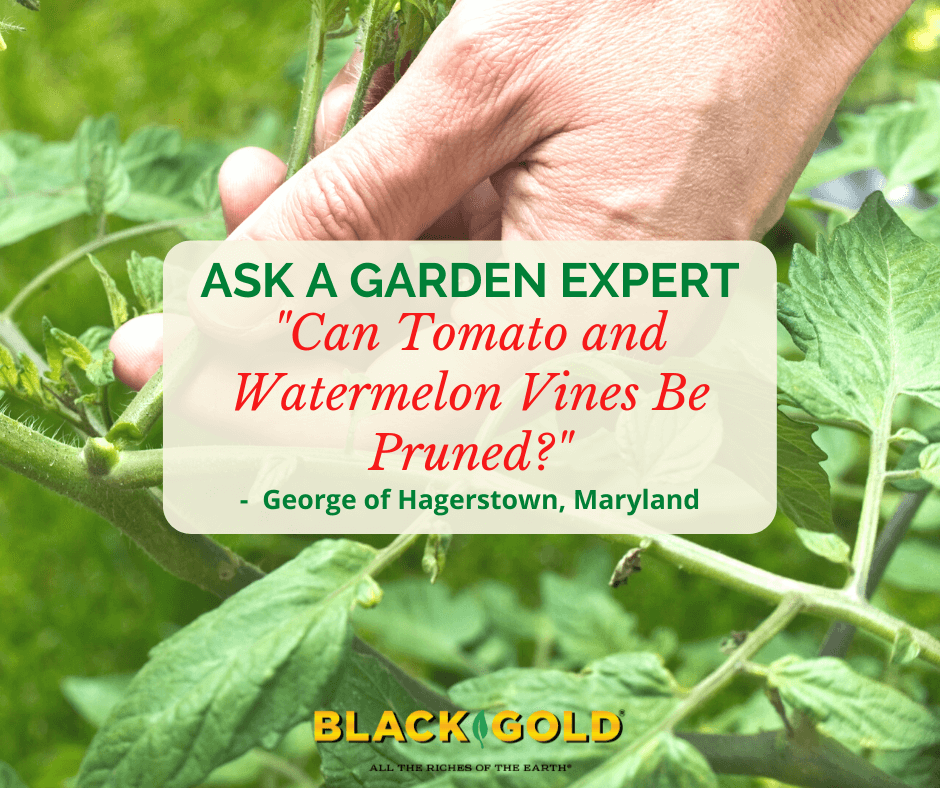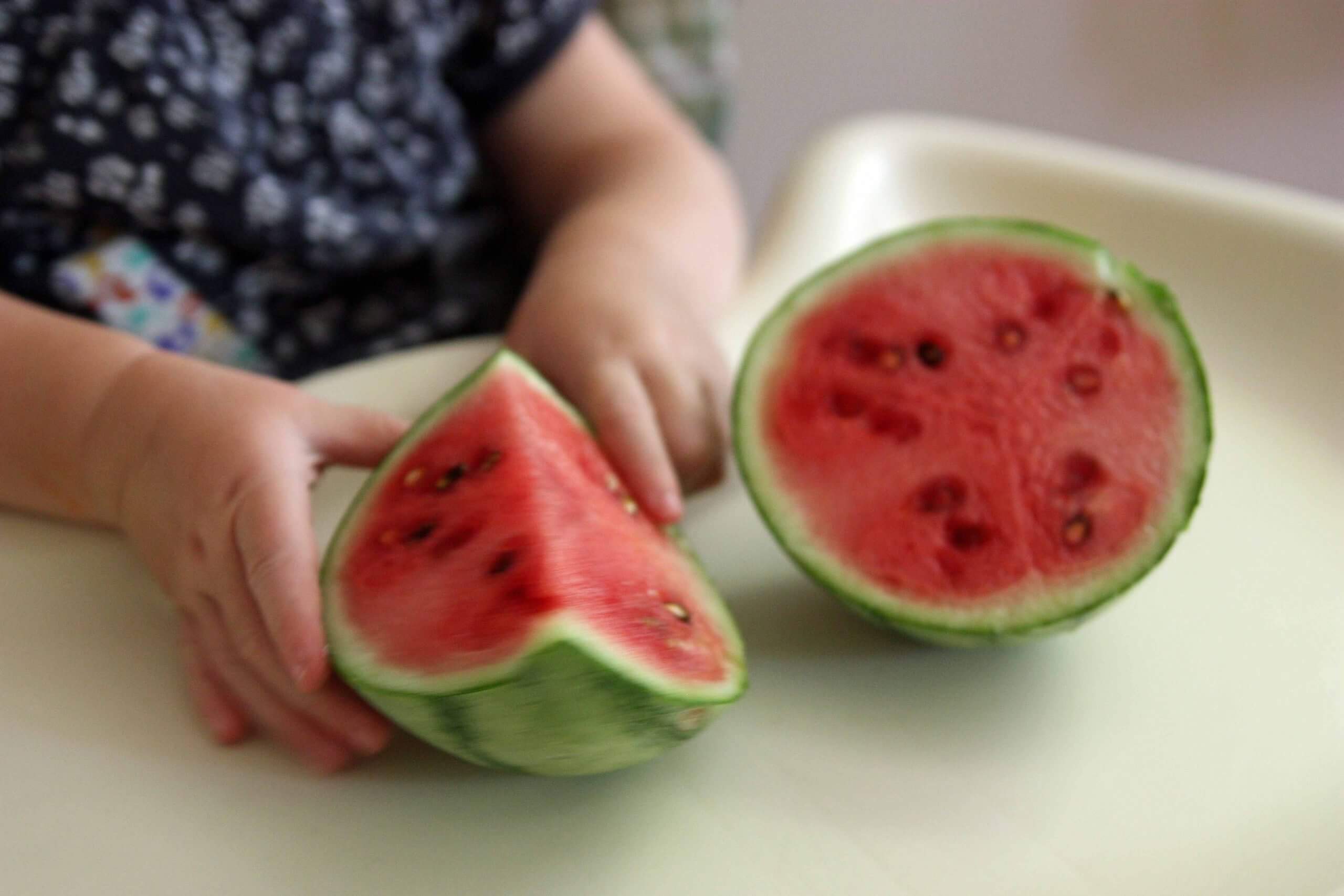
“Can watermelon vines be grown in containers?” Question from George of Hagerstown, MD
Answer: Watermelons can be grown in large containers if you choose a compact variety. Here are my recommendations regarding potted watermelon culture.
Growing Potted Watermelons
First, choose a more compact, short-vine watermelon variety suited for container growing. ‘Cal Sweet Bush‘, a 2019 AAS award winner, has excellent melons and vines that do not take over, and ‘Bush Sugar Baby‘ is another small-vined type with tasty melons. Next, choose a large container that’s between 18 to 24 inches. There must be holes at the bottom for drainage. Plastic or glazed containers hold water better in the heat of summer. Fill the pot with quality, porous potting soil that holds water well. I would choose Black Gold Natural & Organic Raised Bed & Potting Mix. Place the pot in a spot where it gets full sun, and the vining stems can hang down and spread a little. Patios or open garden areas work well for large potted vegetables like this.
Plant one or two watermelons in the pot in spring after the threat of frost has passed. Keep the soil moist. When the vines have reached a good size in summer, water daily in the absence of rain. Fertilizer well from the beginning. A good slow-release fertilizer formulated for vegetables is ideal. Be sure to follow the manufacturer’s application instructions.
Melons should start to appear by late July or August.
Happy melon growing!
Jessie Keith
Black Gold Horticulturist




